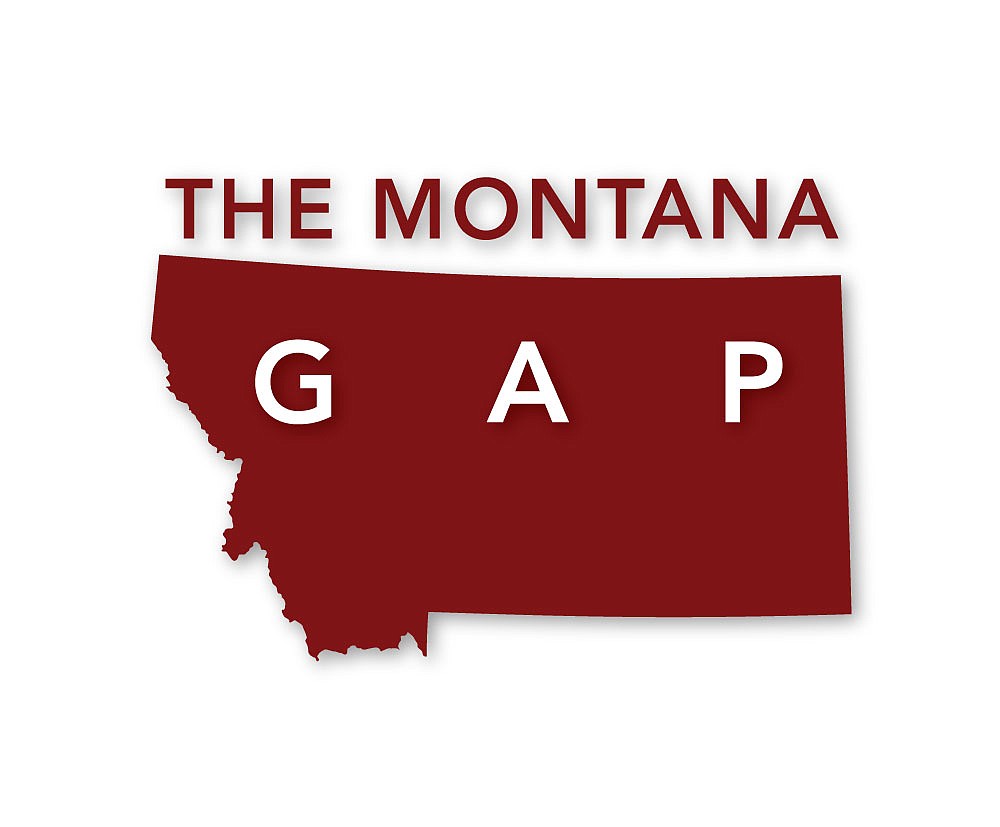Montana teens organize to prevent suicides
ARLEE – Lane Johnson, 17, dribbled a basketball down a concrete court in his hometown with the skill of a state champion and easily dropped the ball through the hoop. His skill developed after hours of practice and years of playing the game, and in that time, he never thought he would become a role model, but he welcomed the title.
Johnson is a member of the Arlee Warrior basketball team who won the Montana Class C State Championship this year. As the top athletes in the state, the team realized other teenagers and children would be looking up to them, so they decided to use their platform to bring awareness to the issue of suicide, and positive role models might just be one of the things kids need.
According to what research says about social support, the team is on the right track in their efforts to encourage a healthy well-being among adolescents. Factors such as a sense of connection and an environment in which the expression of emotions are encouraged protects against the development of behavioral disorders, according to a study by the Johns Hopkins Bloomberg School of Public Health in Maryland, released in the Journal of Adolescent Health in 2014.
“Social support may be an important psychosocial buffer in the face of other risk factors and may play an even more significant role in the lives of adolescents,” the research states.
The study looked into the association between social support and mental health among vulnerable adolescents and found that improving social supports in families and neighborhoods may alleviate distress and foster hope.
The Warriors used their own experiences when they decided to bring awareness to the issue of suicide and support people in Arlee and on the Flathead Indian Reservation.
“We kept hearing about so many suicides, so we wanted to try and help,” Johnson said. Suicide affected his family as well. He said most of the team members have lost a friend or family member to death by suicide or known someone who has attempted suicide.
Montana has ranked in the top five for suicide rates in the past 40 years, according to the Department of Public Health and Human Services. Suicide is the second leading cause of death in the state for ages 10 to 25, according to the state’s Suicide Mortality Review Team. The latest research shows the highest rate of suicide is among Native Americans.
On February 23, the Warriors began their battle against suicide as they gathered near a basketball court in their red and white warm-ups and uniforms to record a message before competing in the Class C Divisional Tournament at Hamilton.
“We, the Arlee Warriors, are dedicating this divisional tournament to all the families that have fallen victim to the loss of a loved one due to the pressures of life,” player Phillip Malatare said in the video.
The team reached out to the youth on the reservation and asked them not to use suicide as a solution to their pain.
Johnson is the third Warrior to speak in the video: “As a team, we rely on each other to get through the challenges on the court and in life.” The video continues with Isaac Fisher saying: “We want you to know that we stand together with you.”
After winning the tournament, they went on to compete in the Montana High School Class C State Basketball Championship in March. Before leaving, they created another video. In the three-minute clip, the players pass a basketball around and share a message from their home gym. Malatare is wearing a traditional feathered war bonnet.
“All throughout history, warriors protected and fought for their people. Now, more than ever, we need warriors,” he said.
The ball is passed to player Greg Whitesell. “Today, we are bombarded by technology meant to make our lives better, however, we often find ourselves feeling like we don’t measure up.”
They continue to talk about the struggles of being a teenager, the perception that others have the perfect life, and the false idea that suicide is a way out. “The truth is that we all struggle,” one player said.
After the team won the championship, they visited several schools to share their message of hope. Their second video received more than a million views. Politicians met with them to discuss policy to help support suicide prevention efforts, and state and tribal governments awarded their work. The Montana Chapter of the American Foundation for Suicide Prevention presented the team with a certificate of appreciation for bringing awareness to the issue.
“The only thing we can really do is to try,” Johnson said. “There is no guarantee that what we say or do will help for everyone, but it’s important to us to do something.”
Their leadership may offer a strategy other teens could follow. The approach involves starting a conversation about an important issue using video, group talks or individual discussions. Johnson said compassion is an important tool when discussing issues involving suicide.
He said talking about suicide might seem like a simple thing to do, but the topic comes with a stigma, and some people feel ashamed to even mention mental health issues.
“Kids and adults don’t want to talk about suicide,” Johnson said. He explained that people often fear the reaction they will get.
Johnson said the team wants people to be aware that it’s okay to talk to someone if they are having thoughts about suicide. “I think it can help to get those feelings off your chest,” he said.
The team also shares the National Suicide Prevention Lifeline at 1-800-273-8255, so people can find more resources if they need help.
Students at the St. Ignatius High School, 20 miles up the road from Arlee, decided to be leaders in their school and organize an ongoing project about mental health and suicide earlier this year.
Leila Marsh, one of the group leaders, said if she were wearing a hat she would tip it and say “thank you” to the Arlee Warriors for sharing their message about suicide prevention.
“It’s really important that we get this message out,” she said. “I think students have decided that to make change, we need to be the change.”
The St. Ignatius school group leaders started their own conversation about mental health with students in their age groups.
“It only took one person to start talking and everyone started opening up,” Sophia Tolbert said. “We cried when people talked about actual suicide attempts, and we realized that one problem doesn’t one-up another. Every struggle is important.”
The next part of the project was for the students to answer several written questions about how suicide and mental health issues impact their lives. The answers to those questions were anonymously posted on a bulletin board within the school to show that many kids struggle with issues related to mental health.
Marsh said she wanted people to keep talking about suicide prevention and mental health until the subject becomes a common part of regular conversations, and people feel comfortable asking for help.
Teenagers supporting each other and being role models might be an effective tool in suicide prevention because, as research shows, teenagers feel more comfortable talking to their peers. Johnson said the reason is probably simple. “Your friends can understand what you’re going through,” he said.
Dr. Matt Byerly is a professor of neuroscience at Montana State University and the director for the Center for Mental Health Research and Recovery. He said studies prove teenagers prefer talking to other teenagers. “An important study, published in 2008, found that over 80 percent of youth who had experienced a suicide attempt in the prior two weeks (during the study) said they would not tell an adult,” Byerly said. “This data suggests that involving youth directly in suicide prevention efforts is critical.”
Matt Kuntz is the executive director for the National Alliance on Mental Illness for Montana. He said suicide prevention is a multidimensional challenge and getting youth involved could be a new direction that helps save lives.
“We need people at the peer level that know how to help each other,” he said. “We need to give them the tools they need.”
Montana has ranked in the top five in the nation for the highest suicide rates for the past 40 years. Kuntz said it’s going to take a lot of work to change those statistics, but change can happen.
“Suicide prevention is multidimensional, and it’s different for each community, but we are going in a really hopeful direction as more and more people join the fight,” he said.
Karen Peterson reports for the Valley Journal.



